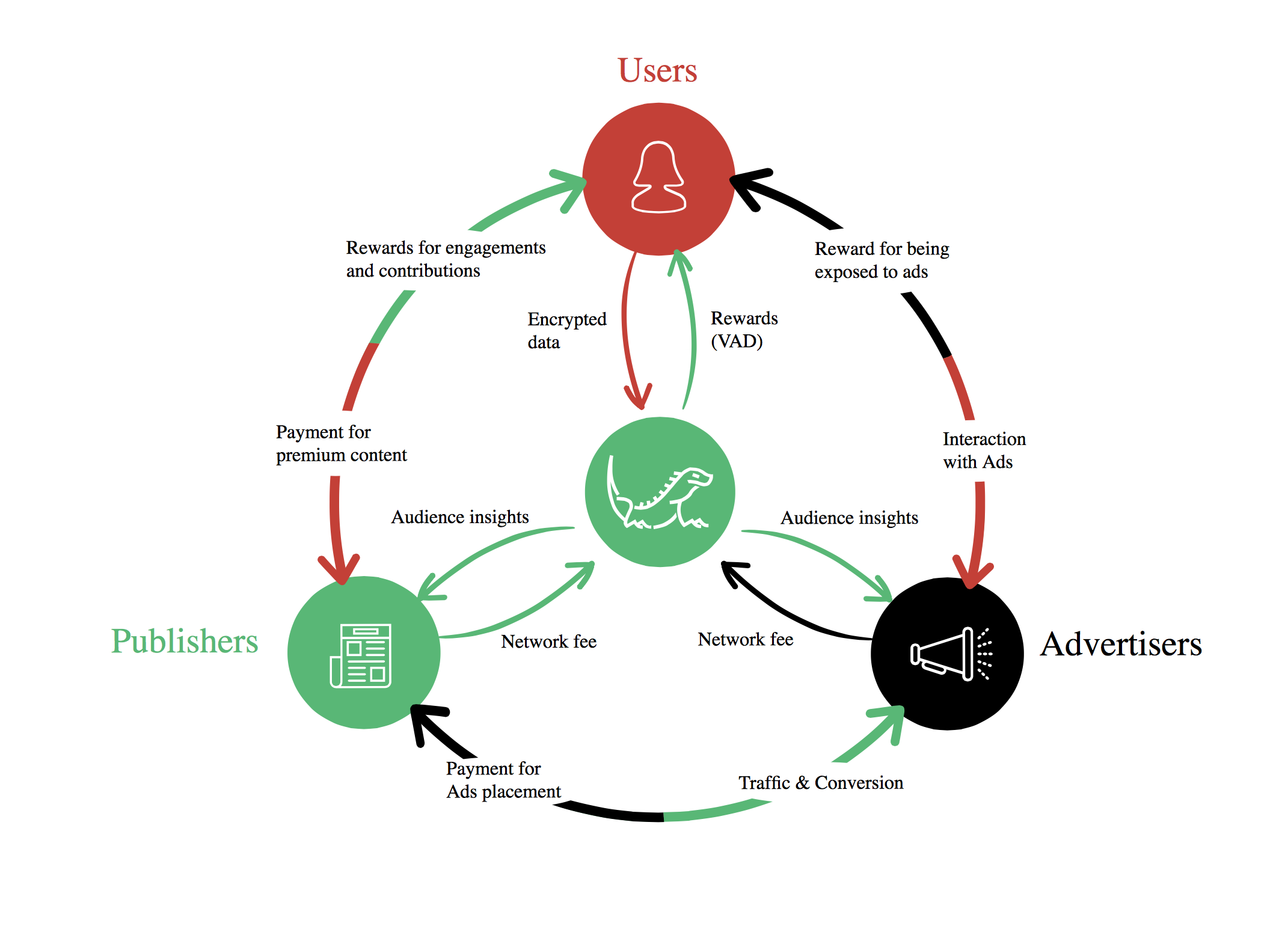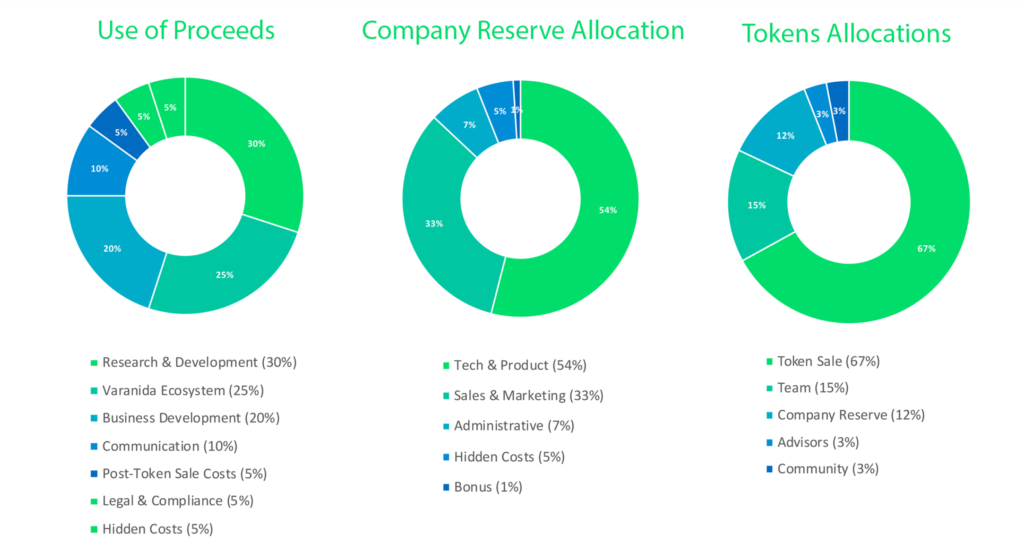Facebook Ads Relaxes Ban on Cryptocurrency Advertising
Big news on the social media marketing front for cryptocurrency advertising
Author: Muyao Shen / Source: CoinDesk
Facebook is easing its ban – sort of – on ads related to cryptocurrency.
The social media giant has launched a "cryptocurrency products and services onboarding request" form that will allow some companies to get their ads on the platform, according to a blog post published Tuesday.
Facebook, however, won't allow advertisements for initial coin offerings or binary options. The prohibition on these remains in effect months after Facebook first took action against crypto-ads in a move that was followed by similar actions by Twitter, Google and other major sites.
The request sheet shows that the social media company wants specifics on the kinds of services companies wishing to advertise offer. For example, Facebook asks whether companies have the relevant licenses in order to operate, or if they are a publicly-listed company. Facebook has also...

What the Korea's Crypto Scene Is Saying about Exchange hacks
The Korean cryptocurrency community speaks out about the recent exchange hacks
Author: Christine Kim / Source: CoinDesk
The past two weeks have seen two South Korean exchanges get attacked and robbed, sparking commentary and critique among the country's local cryptocurrency community.
It began with the Coinrail hack on June 9. At the time, the popular South Korean cryptocurrency exchange tentatively announced a "cyber intrusion" that saw the loss of $40 million worth of cryptocurrencies.
The exact number and amount of tokens taken from the exchange have yet to be confirmed by the company itself, though a third-party firm assisting Coinrail gave a few estimates in a blog post the following day.
If that wasn't enough, on June 20, Bithumb – South Korea's largest by trade volume – also announced a major security breach in which $31 million was reported to be lost. In a post published on their official website the same day, Bithumb reassured customers that their assets were now securely stored in offline "cold" wallets unreachable to hackers and the stolen funds would be fully reimbursed.
Combine this environment with a recent bearish market trend taking the price of bitcoin down in a way not seen since 2014 and you get the kind of social media uproar that questions just about everything.
As one Korean cryptocurrency skeptic tweeted:

"Anyone would look at this and see it as an insider act, no? Please catch the culprit and restore the platform back to the original state as soon as possible…You said there is no vulnerability of being hacking in an advertisement. Are you joking me right now?"

Digging Deep
For most, it's not a matter of tech security – that's a given for those that care – but rather about the people who operate the exchanges behind the scenes.
As @leejongsul78 puts it:

Develop Your Own Smart Contracts with TheTokener Video Tutorials
TheTokener will be rolling out a video tutorial series to enable you to develop your own smart contracts.
Author: Stefan Filipović / Source: thetokener.com

TheTokener is excited to announce that we are launching a video tutorial series for developing smart contracts! With the help of Solidity programming language, in this series, you will find everything you need to know in order to get started with your own smart contracts.
Our first video is an introduction to Ethereum, Smart Contracts and Solidity. This will be an introductory type of the tutorial, sort of a 'getting started guide'. If you are a complete beginner, don’t worry, this is a right place...
A Modest Blockchain Proposal: Reshape Advertising with Varanida's Token Sale
Building a better Internet through a decentralized advertising and content solution.
Blockchain innovator Varanida plans to do nothing less than change the nature of internet advertising. Advertising has long supported the internet, keeping much of it free to users. But with privacy and phishing concerns on the rise, and with the broader and even more dangerous perception that the internet has been hijacked by profit-obsessed click baiters, link farmers, etc., to the detriment of the old dream that ‘information wants to be free,’ it has become clear that internet advertising will have to change.

The goal of Varanida is to get out in front of and mold that change.
In broadest terms, the idea is to produce a world in which internet users see the advertising they want to see, given their ability to earn VAD tokens by watching it. So the users win. Also, publishers win by paying a fair value price for their advertising and preserving their engagement with their audience. And the advertisers win, getting a fair and transparent advertising network.
The key to achieving this: blockchain technology. As the white paper says, the Varanida Blockchain will deploy “a crowdsourced advertising validation through the validation by users of the quality of the advertising.” This will be a fraud-proof system, allowing for trust within the triangle of advertisers, publishers, and users.
Varanida issued its token sales announcement on June 27.
On that day, Round 1, an invite-only round, began. The minimum contribution for this round is 3 BTC, or 30 ETH, and 30.15% of the new tokens, VAD, will be sold during this round.
Round 2 is slated to begin on August 15 (unless the maximum amount for Round 1 is hit before then). This will be open to the public, subject to know-your-customer restrictions.
The project’s mother company, Varanida SAS, is headquartered in Lyon, France. One of its early investors and strategic advisors is Joel Comm, the bestselling author of The AdSense Code (2006) and Twitter Power (2009).

Peering Through the #FUD About #Crypto
Bitcoin has thrust cryptocurrencies into mainstream consciousness by shaking up the financial world in the past 9 years.
Author: Gareth Jenkinson / Source: Cointelegraph
Since its inception in 2009, the preeminent cryptocurrency has thrown a spanner in the works of traditional banking and financial institutions and has paved the way for the creation of a plethora of industry-shaping virtual currencies and blockchain-based innovations.
With that being said, it’s been far from smooth sailing for Bitcoin or any other cryptocurrency. Dramatic highs and soul-shattering lows have been part and parcel of the past nine years.
The volatility of cryptocurrencies has created more than a few detractors and we’ve seen a number of headlines exclaiming the ‘death’ of Bitcoin and cryptocurrencies in general.
These obituaries have come from a wide variety of industry experts and commentators. While they’re almost always subjective, they portray a negative, fear-mongering mentality that detracts from the technological breakthroughs that have been sparked by blockchain technology.
Let’s take a look at some of the instances that have led to mainstream media outlets signaling the death of Bitcoin and examine where the industry is at midway through 2018.

It’s not difficult to find articles slamming Bitcoin and cryptocurrencies — just look at 99bitcoins.com, which has a compendium of Bitcoin obituaries that has now surpassed the 300 mark.
The earliest headline heralding the end of Bitcoin, according to the website, is an article entitled ‘Why Bitcoin can’t be a currency’ published in a blog entitled The Underground Economist in 2010. In essence, the writer pointed to Bitcoin’s constantly fluctuating value as the main reason why it shouldn’t be considered a currency.
“While Bitcoin has managed to bootstrap itself on a limited scale, it lacks any mechanism for dealing with fluctuations in demand. Increasing demand for Bitcoin will cause prices in terms of Bitcoin to drop (deflation), while decreasing demand will cause them to rise (inflation).”
Since then, the number of headlines suggesting that Bitcoin was doomed to fail has increased year on year. In 2017, there were a total of 118 Bitcoin obituaries articles.
These obituaries are any articles that predict the demise of Bitcoin, based on assumptions or quotes from a wide range of commentators. This includes mentions of fraud, ponzi schemes and money laundering and frankly anything that is negative enough to cast aspersions on the future of Bitcoin.
While the sheer number of articles that have predicted the death of Bitcoin may be humorous, a glance down the list of headlines from various publications tells a different story altogether.
Small scale blogs like the one that is credited for the first Bitcoin death article have a limited reach and aren’t likely to have a profound effect on the sentiment of a large group of people.
However, as the number of these articles increases, so too has the caliber and profile of the publications producing this content.

Mainstream mania
CNBC has covered cryptocurrencies extensively over the last few years, with content that is fairly objective in terms widespread coverage of both positive and negative sentiments towards the industry,
With that being said, CNBC has been the source of numerous interviews quoting various sources that have labelled Bitcoin a bubble and ponzi scheme, while speculating on how it would crash.
The most telling example of this was JPMorgan CEO Jamie Dimon comparing Bitcoin to the Dutch Tulip Mania before predicting it would blow up on CNBC. Perhaps more telling was the effect Dimon’s statements had on Bitcoin’s value, which fell after the American executive’s comments:
"It's worse than tulip bulbs. It won't end well. Someone is going to get killed. Currencies have legal support. It will blow up."
In November 2017, Bloomberg published an article that speculated on a number of different factors that could potentially derail Bitcoin as it headed to that $20,000 high in December.
The article quoted several sources that point to the number of altcoins, regulations, cyber attacks and the launch of derivatives as pitfalls to Bitcoin’s rise in price and popularity.
Bubble talk
The Guardian published an editorial in November 2017 that labelled Bitcoin’s price as a bubble, and pointed to the costs of mining, slammed the endorsements by celebrities and made strong statements about Bitcoin’s primary use as means to buy drugs and pay ransoms online.
Forbes contributor Jay Adkisson wrote an op-ed which went on to describe the way Bitcoin is currently sold as a scam. The writer boiled down Bitcoin to a core existence as a number, without an intrinsic value.
He went on to suggest that cryptocurrencies lack ‘uniqueness,’ pointing to the sheer number of cryptocurrencies in existence.
The Telegraph also published a number of articles last year, drumming up ‘bubble’ rhetoric as the 2017 wound to a close. Abhishek Parajuli took a mighty swipe in his own op-ed on the platform, citing wild volatility, poor utility as a medium exchange as well as slow transaction speeds:
“So, hype aside, Bitcoins are lottery tickets. They have no underlying utility. When the music stops, those left holding them will be burned.”
Wall Street Journal contributor James Mackintosh weighed in on the value of Bitcoin in mid-September 2017. In essence, the writer delved into the notion of Bitcoin having become digital gold as a store of value.
Going on...
CoolBitX's CoolWallet S Hardware Wallet (Review)
CoolBitX's next generation CoolWallet S is a credit-card-like hardware wallet for storing Bitcoin (BTC), Ethereum (ETH), Litecoin (LTC), Ripple (XRP), Bitcoin Cash (BCH), and select ERC20 tokens — but just how “cool” is it? Let’s find out!
Author: Adam James / Source: Bitcoinist.com
Wallet Design
First and foremost, let’s get one thing straight — you’re not going to find a ‘cooler’ looking hardware wallet anywhere on the market today.
Coming packaged in a black and gold box that looks fit to hold a luxury watch — with a personal message from CEO Michael Ou printed in gold lettering on the inside cover — the CoolWallet S offers a distinctively premium feel from the moment one unpacks it.
The package itself contains a charging dock and accompanying USB connector, a user manual, a nice-looking recovery card for handwriting your unique seed phrase, a black-on-transparent logo sticker, and — of course — the CoolWallet S, itself. And what a wallet it is!
The CoolWallet S resembles a credit card from the exterior and boasts a slick and classy-looking black and gold design which holds itself back from appearing flashy — opting instead for an understated, business-like vibe.
The back of the card has little more than a discrete serial number printed on the top, just above an appealing E-Paper display. Halfway down the right side of the card is a single button for powering on the device, changing the displayed cryptocurrency, and confirming commands. The bottom of the device features more discrete text beneath two charging pins. The button on the unit I reviewed had a response click requiring a concerted press.
The card itself is waterproof, tamper-proof, impact resistant, and heat/cold resistant — though, to be fair, I wouldn’t recommend testing these claims. The card features an acceptable amount of flex, though I would also caution against seeing how far it can fold. Still, it can easily slip into a normal pocket wallet with your IDs and credit cards,...
Working for a “Big Company” Can Be Fun, If . . .
Big companies don’t innovate fast enough.
Big companies tend to build a “kill-zone” around themselves. They destroy everything and everyone that gets too close.
There is no joy in working for a big company. More personal fulfilment can be found in a startup or other younger and smaller organization.
Author: Erik P.M. Vermeulen / Source: Hacker Noon

I come across these statements a lot in the media (old and new) recently. Many of my co-workers and students appear to agree.
Of course, there is something to these ideas. The pace and range of digital innovations as well as shorter innovation cycles make it much more difficult for bigger companies to survive. This sort of pressure is not going to deliver a stable and fulfilling work environment. And this trend seems set to continue in the future, making working for (and with) big companies even less attractive.
But there is a flip side and we shouldn’t dismiss corporate giants too quickly. Working for (as an employee) or with big companies (as a startup or research institution) can be exciting, rewarding, and inspiring. It may even be the best and only way to build a career or have an impact with your startup.
However, this will all depend on whether that big company is operating as an “intelligent platform.”
What is an “Intelligent Platform”?
When I use the term “Intelligent Platform”, people immediately assume that I am talking about companies that operate a “social” platform (Facebook, Instagram), an “exchange” platform (Amazon, Airbnb), a “content” platform (YouTube, Medium), a “software” platform (GE’s Predix, Microsoft’s GitHub), or even a “blockchain” platform (Ethereum, EOS).
This is not surprising. After all, the emergence of these new platforms and services has been one of the major economic developments of the last two decades.
But we should recognize that there is so much more to “platform companies” than facilitating transactions, exchanging information, or connecting people. There is a much more important lesson to be learned from the success of such companies.
What platform companies all have in common is that they empower and facilitate experimentation, collaboration, and co-creation amongst multiple groups of stakeholders.
These stakeholders include employees and investors, but also consumers, developers, content creators, other companies (both large and small), non-profits, educational institutions, governments, etc.
What makes an “intelligent platform” special is that it uses stakeholders’ input and feedback to improve the user experience and engagement with the “platform” and its products, services, and other solutions. This is the real lesson to be taken from the success of Amazon, Facebook, Netflix,etc.
Crucially, digital technologies are central to this approach. In this sense, all companies that wish to operate as intelligent platforms need to think and act “as if” they are a tech company.
As such, intelligent platforms are built around the idea of delivering constant innovation via an open and inclusive process of co-creation. By “organizing-for-innovation” in this way, such platforms are radically different from the clearly defined, static roles and fixed hierarchies of traditional organizations.
These are the distinctive features of “intelligent platforms”, and this is why, in an age of hyper-competitive global markets, every company needs to re-invent itself as an “intelligent platform.”
But more than that, everyone needs to ask themselves:
Is my (current or prospective) employer organized as an intelligent platform?
And why does this matter so much? Because only “intelligent platforms” can deliver the kind of environment conducive to a meaningful, fulfilling, and fun experience. Working for a big company can be fun, but only if it is organized as an intelligent platform.
So, how can we tell whether a company is organized in this way?
The 4 “Ingredients” of Intelligent Platforms
It should be noted that there is no “one-size-fits-all” model for such platforms.
Intelligent platforms can take multiple forms ranging from slightly “tweaked” versions of traditional (hierarchical and closed) companies through to the (flat and open) blockchain-based “decentralized autonomous organizations.” The “best” approach depends on the individualized circumstances of a particular business or organization.
The structure and organization of an intelligent platform does depend on four crucial “ingredients.” Every company has to analyze and use these ingredients to find the unique recipe for its “platform” to maximize creativity and opportunities for innovation.
And every employee needs to understand these ingredients in order to find an organization that works for them.
1 — Technology
It could be argued that intelligent platforms aren’t new. Some form of platforms has always been around. The exponential growth of technology, however, has significantly accelerated the emergence, possibilities, and opportunities of platforms.
For instance, Airbnb or Amazon rely...
Are Privacy Coins ‘One of the Greatest Emerging Threats to U.S. National Security?'
What will the future hold for the crypto worlds privacy coins with Congress looking at possibly regulating them. Is it even possible?
Author: Adam James / Source: Bitcoinist.com
The U.S. Secret Service is taking a good look at privacy-focused cryptocurrencies like Monero and Zcash while urging Congress to “consider additional legislative or regulatory actions.”
Fear of Privacy Coins
Last week, a top official from the federal law enforcement agency reportedly requested help from Congress in combating the use of privacy coins for illicit purposes. Robert Novy, Deputy Assistant Director of the Secret Service’s Office of Investigations, wrote:
We should … consider additional legislative or regulatory actions to address potential challenges related to anonymity-enhanced cryptocurrencies.
He added, as reported by Forbes:
[C]ontinued Congressional attention is warranted to ensure law enforcement agencies maintain lawful access to critical sources of evidence, regardless of where, or in what form, that information is stored.
Greg Nevano, an official in the investigations division of the Immigration and Customs Enforcement, backed up Novy’s opinion, stating:
Some newer cryptocurrencies have features that make the tracing of them quite complicated. These new anonymity-enhanced cryptocurrencies are clearly ripe for illicit use in an effort to subvert...
Current Bear Trend ‘By No Means’ Funeral for Bitcoin says CNBC’s Brian Kelly
Key insights on the Bitcoin markets and trading from Brian Kelley.
Author: Helen Partz / Source: Cointelegraph
The current bear market is not a funeral for Bitcoin (BTC) “whatsoever,” CEO of BKCM LLC investment firm Brian Kelly said on CNBC's Fast Money segment June 22.
We tried to have a funeral for #Bitcoin as it fell below $6K, but @BKBrianKelly is still a believer. Here's why he thinks the cryptocurrency will resurrect pic.twitter.com/B8ozbzPsfJ
— CNBC's Fast Money (@CNBCFastMoney) June 22, 2018
To back up his statement, Kelly provided three key factors. First, he pointed out that the market sentiment is “approaching lows,” implying that a trend reversal is likely to follow.
Bitcoin, trading at $5,881 as of press time, has been in an almost continuous decline since hitting its all-time-high of $20,000 in December 2017.
Asia’s Influence on the Cryptocurrency Markets
Asia is one of the leading influencers in the crypto markets and trading volume.
Author: Kaia / Source: CoinStaker | Bitcoin News

Nowadays cryptocurrencies like Bitcoin and Ethereum are considered widely to be real investment vehicles, with the future goal being mass adoption. This is slowly progressing within the US and Europe, but some areas of Asia, particularly in the Southeast region have really started to embrace this revolution. Cryptocurrency is being used in many ways such as Bitcoin Cash beer gardens in Thailand and blockchain based microlending programmes in Cambodia.
Until midway through 2017 China was regarded as the biggest market worldwide for Bitcoin trading, however from September onwards this began to change when ICOs were banned and then government officials shut down some local Bitcoin exchanges, such as OKcoin and Huobi, which were two of the largest in the world and this then made Japan the largest Bitcoin market in the world. It is only set to get worse for China too as now their Government Officials also want to crack down even further on Bitcoin mining and stop local internet access to cryptocurrency exchanges internationally. This would stop any potential Chinese Bitcoin consumers buying from foreign exchanges as well as their own.
Asia’s Influence is undeniable
It has been noticed that cryptocurrency trading in Asia has proved to be very adaptable, in particular in relation to the wide ranging prices across the continent. The chief exec of a Hong...











